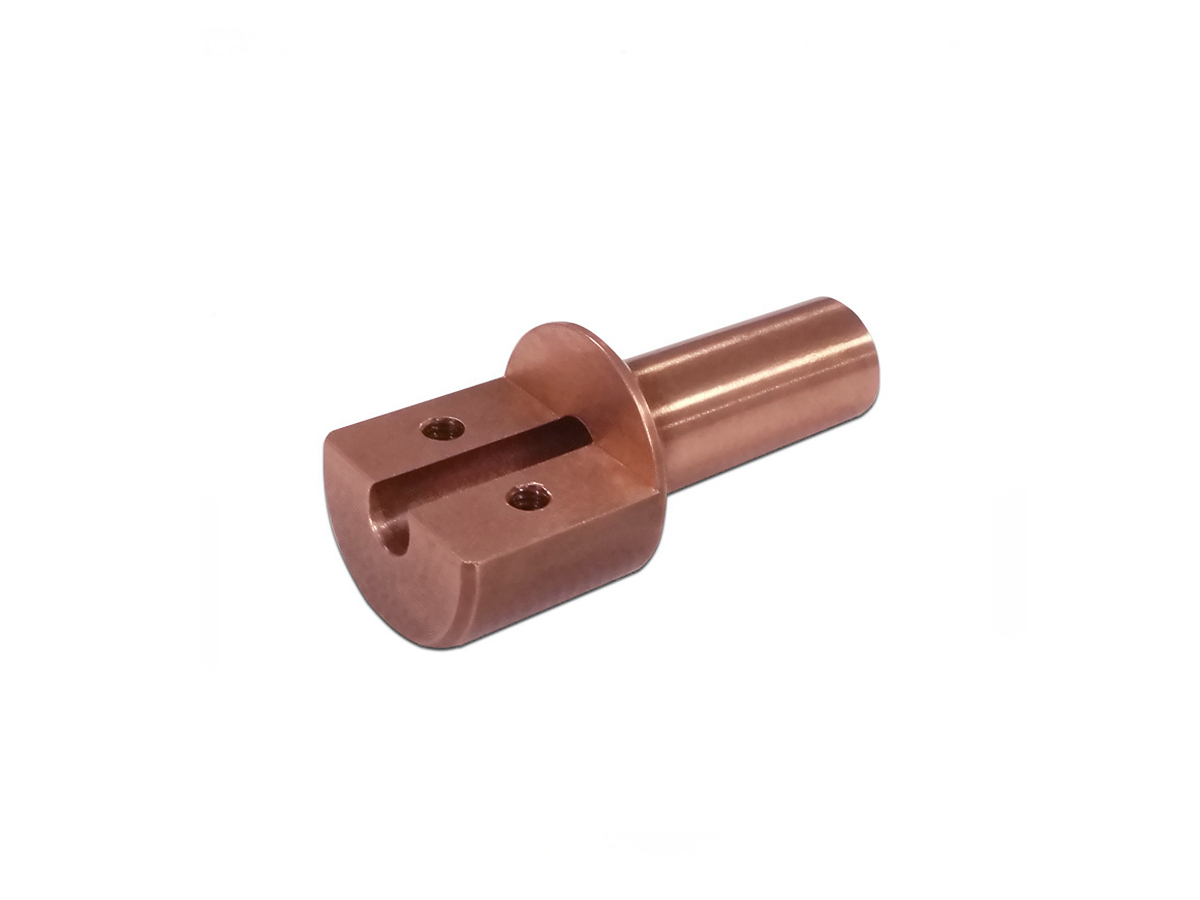Copper Brass Low-Volume CNC Machining: Ideal for Electrical and Mechanical Applications
Introduction
Copper and brass low-volume CNC machining offers an efficient, precise solution for producing high-performance components in electrical and mechanical applications. Copper alloys like C110 and brass alloys such as C360 and C377 are renowned for their excellent conductivity, corrosion resistance, and machinability. Industries such as electronics, automotive, and industrial equipment frequently rely on Copper CNC Machining and Brass CNC Machining to produce low-volume, high-quality components that meet the rigorous demands of these applications.
Low-volume CNC machining is especially beneficial for prototyping and small-batch production, offering quick turnaround times for intricate components that require high precision and fast adaptation. This Low-Volume CNC Machining process allows manufacturers to test, refine, and finalize designs quickly before scaling up to full production, ensuring products meet exacting specifications.
Copper and Brass Material Properties
Material Performance Comparison Table
Copper Alloy | Electrical Conductivity (% IACS) | Tensile Strength (MPa) | Yield Strength (MPa) | Density (g/cm³) | Applications | Advantages |
|---|---|---|---|---|---|---|
≥100 | 220–250 | 70–85 | 8.92 | Electrical terminals, connectors, power cables | Superior electrical conductivity, high corrosion resistance | |
26–28 | 345–480 | 125–350 | 8.50 | Connectors, fittings, valves | Excellent machinability, good mechanical strength | |
≥101 | 220–260 | 80–100 | 8.94 | High-performance conductors, precision electronic parts | Highest purity, minimal oxygen content, high conductivity | |
26 | 340–430 | 125–180 | 8.47 | Precision electronic components, switch parts | Good machinability, corrosion resistance, and durability |
Selecting the Right Copper and Brass Alloys for Low-Volume CNC Machining
Choosing the correct copper or brass alloy for CNC machining depends on factors like electrical conductivity, machinability, and mechanical strength:
Copper C110 (T2): Ideal for electrical applications requiring superior conductivity (≥100% IACS) and excellent corrosion resistance. It is commonly used for connectors, terminals, and power cables.
Brass C360: Preferred for parts requiring high machinability and good mechanical strength (up to 480 MPa tensile), often used in connectors, fittings, and precision electrical hardware.
Copper C101 (Oxygen-Free): Recommended for high-performance electrical components, providing very high purity copper (≥101% IACS) and minimal oxygen content. Perfect for sensitive electronic parts and high-performance conductors.
Brass C377: Best for precision switch components and electrical fittings due to its high machinability and corrosion resistance, suitable for intricate prototypes and parts.
CNC Machining Processes for Copper and Brass Parts
CNC Process Comparison Table
CNC Machining Process | Accuracy (mm) | Surface Finish (Ra µm) | Typical Uses | Advantages |
|---|---|---|---|---|
±0.005 | 0.4–1.2 | Complex electrical connectors | Versatile, ideal for precise part shaping | |
±0.005 | 0.4–1.0 | Cylindrical copper and brass components | High precision for rotational parts | |
±0.01 | 0.8–3.2 | Precise holes, threaded contacts | Fast hole-making, high precision | |
±0.003 | 0.2–1.0 | Intricate electronic prototypes | High accuracy, ability to machine complex geometries |
CNC Process Selection Strategy
Choosing the right CNC process depends on the part complexity, accuracy, and surface finish requirements:
CNC Milling: Ideal for producing intricate electrical components like connectors and housings with tight tolerances (±0.005 mm), suitable for complex geometries.
CNC Turning: Perfect for cylindrical components like electrical terminals and connector pins, providing high accuracy (±0.005 mm) and consistent surface finishes.
CNC Drilling: Recommended for creating precise holes and threads in electrical contacts and mechanical fastenings, ensuring accuracy (±0.01 mm).
Multi-Axis Machining: Essential for complex multi-directional machining of intricate prototypes, offering superior precision (±0.003 mm) and reduced production cycles.
Surface Treatments for Copper and Brass Parts
Surface Treatment Comparison Table
Treatment Method | Surface Roughness (Ra µm) | Wear Resistance | Max Temp (°C) | Applications | Key Features |
|---|---|---|---|---|---|
≤0.8 | Excellent | 300 | Connectors, electrical contacts | Enhanced conductivity, superior corrosion protection | |
≤1.0 | Excellent | 250 | Precision electronic components | Improved corrosion resistance, enhanced reliability | |
≤0.4 | Excellent | 200 | Electrical components, medical devices | Smooth surface, high conductivity, reduced friction | |
Tin Plating | ≤1.0 | Excellent | 150 | Electrical terminals, PCB connectors | Good solderability, excellent corrosion resistance |
Surface Treatment Selection Strategy
Selecting the appropriate surface treatment improves the mechanical and electrical properties of copper and brass parts:
Electroplating: Ideal for electrical connectors and contacts, enhancing corrosion protection, conductivity, and surface durability (ASTM B733 standards).
Passivation: Recommended for sensitive electronic components, providing superior corrosion resistance and improving reliability (ASTM A967 compliance).
Electropolishing: Perfect for precision electrical components, achieving ultra-smooth surfaces (Ra ≤0.4 µm), enhancing electrical performance, and reducing wear.
Tin Plating: Ideal for electrical terminals and PCB connectors, offering excellent solderability and corrosion protection while maintaining high conductivity (ASTM B545).
Typical Copper and Brass Rapid Prototyping Methods
Effective prototyping methods for copper and brass components include:
CNC Machining Prototyping: Provides rapid, high-precision production of copper and brass prototypes.
Copper and Brass 3D Printing: Ideal for creating complex, customized copper and brass parts with rapid turnaround times.
Rapid Molding Prototyping: Efficient for producing moderate complexity copper and brass parts before mass production.
Quality Assurance Procedures
Dimensional Inspection: ±0.002 mm accuracy (ISO 10360-2).
Material Verification: ASTM B152 for Copper, ASTM B16 for Brass.
Surface Finish Assessment: ISO 4287.
Electrical Conductivity Tests: Verification per ASTM E1004.
Corrosion Resistance Evaluation: ASTM B117 Salt Spray Test.
Visual Inspection: ISO 2768 standard compliance.
ISO 9001 Quality Management System: Ensuring consistent quality and performance.
Key Applications
Automotive: Wiring components, electrical connectors
Robotics: High-conductivity components
Consumer Electronics: Connectors, electrical components
Related FAQs:
Why is low-volume CNC machining ideal for copper and brass parts?
What CNC processes work best for machining copper and brass parts?
How do surface treatments enhance copper and brass components?
What quality standards apply to CNC copper and brass prototyping?
Which industries benefit most from copper and brass CNC prototyping?

